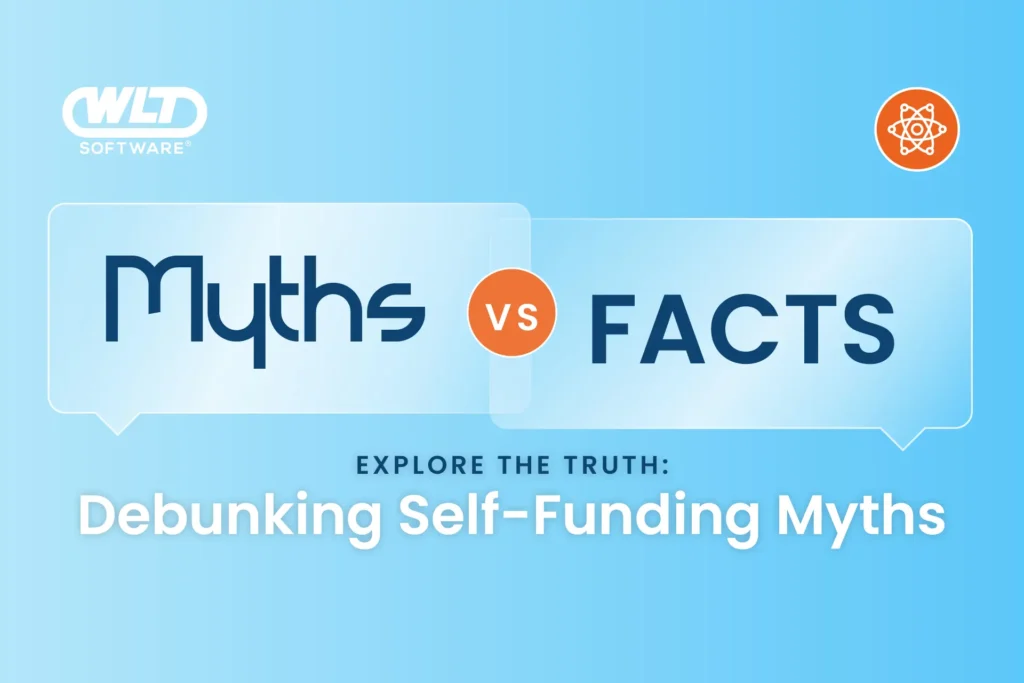The ConnXion, Volume 3, Issue 1
For organizations evaluating their health plan options, the concept of self-funding can seem daunting, particularly for those accustomed to fully-insured plans. The fear of risk, the perceived complexity, and a lack of familiarity can prevent decision-makers from taking the leap.
But what if the real risk is sticking with the status quo? What if the “safe” choice of fully-insured plans is quietly eroding your budget and flexibility? Let’s confront the myths surrounding self-funding and uncover why it’s not only a viable option but often the smarter one, for employers of all sizes.
Myth #1: Self-Funding is Only for Large Groups
The Truth: Small employers can benefit, too, especially with level funding.
Self-funding isn’t exclusive to Fortune 500 companies. Even small to mid-sized employers can access tailored solutions like level funding that provide predictability and security.
Imagine having a health plan that works with your budget instead of against it. Level funding allows you to pay predictable monthly amounts, avoiding the volatility employers fear. And here’s the real kicker: any unused funds can stay with you. Instead of padding the profits of a carrier, you’re building a reserve that could reduce future costs or enhance benefits.
For many small businesses, the idea of empowering employees with better benefits while saving money sounds too good to be true. But for those who’ve made the switch, it’s a reality. The question isn’t whether you’re big enough—it’s whether you’re ready to reap the rewards.
Myth #2: Self-Funded Plans Lack Cost Control
The Truth: With self-funding, cost control isn’t just possible—it’s inevitable with the right tools and mindset.
Think of a fully-insured plan as a car with a frustrating check engine light—it tells you something’s wrong but offers no specifics. With self-funding, you’re not driving blind. You get the equivalent of a diagnostic tool, pinpointing exactly where your dollars are going.
Here’s what most employers don’t realize: fully-insured premiums include costs that don’t serve you. Taxes on those premiums drive up your expenses unnecessarily. Self-funding minimizes those costs and taxes, putting more money back in your pocket to reinvest in your employees.
Even better, self-funding aligns your ecosystem for success. Carriers operating under medical loss ratio caps are incentivized to spend more—not less—on claims, eroding your control. With self-funding, platforms like WLT’s MediClaims and MediConnX360 2.0 empower you to align incentives across providers, ensuring every dollar serves your workforce, not a faceless corporate bottom line.
Ask yourself this: Are you content with a vague, opaque bill, or do you want to understand—and influence—your healthcare spending?
Myth #3: Administering Self-Funded Plans is Too Complicated
The Truth: With the right TPA and technology, self-funded plan administration is seamless.
Managing a self-funded plan doesn’t mean HR teams are left holding the bag. Independent third-party administrators (TPAs) specialize in streamlining the experience, managing claims, compliance, and member communication. Add-on tools like WLT’s customizable platforms make it easy for employers to offer a sophisticated yet user-friendly health plan for employees without drowning in complexity.
Think about it this way: Sticking with fully-insured plans means dealing with one-size-fits-all solutions that rarely address your specific needs. Why settle for cookie-cutter when you could have custom-made?
Myth #4: Self-Funding is Too Risky and Expensive
The Truth: Strategic stop-loss coverage keeps your risk in check.
Risk is a valid concern, but it’s one that self-funding has already solved. Specific stop-loss covers high-cost individual claims, while aggregate stop-loss ensures your group’s overall expenses stay manageable. You’re not gambling—you’re taking a calculated, well-protected step forward.
And here’s the part no one talks about: Fully-insured plans don’t eliminate risk; they just hide it. Those sky-high premiums you pay? They’re calculated to cover the insurer’s worst-case scenario—whether or not you ever see claims that high. With self-funding, you pay for what you use, not what the carrier assumes you might use.
Rather than handing over control to an insurer, you retain it. You can forecast, adapt, and adjust in real-time, with partners ensuring you’re never navigating alone.
Myth #5: Self-Funded Plans Lead to Poor Employee Experiences
The Truth: Self-funding enhances the employee experience through innovation and choice.
When you think of employee satisfaction, flexibility is key. Fully-insured carriers often lock employers into rigid networks and limited benefits, leaving little room for customization. Independent TPAs, on the other hand, embrace innovative solutions that meet employees where they are.
Whether it’s outside-the-box benefits, seamless integrations, or personalized support, self-funding doesn’t just match fully-insured plans—it surpasses them and ensures every touchpoint reflects a commitment to exceptional experiences, from plan design to claims processing.
The result? A healthier, happier, and more engaged workforce that sees your investment in their well-being.
Innovation in Action
At WLT, we pride ourselves on pushing the boundaries of what’s possible in self-funding. While many systems resist innovation, WLT’s platforms thrive on exploring the unknown and delivering exceptional employee experiences. From integrating cutting-edge partners to enabling seamless plan administration, we’re here to help employers take control of their healthcare strategy.
Ask yourself this: Is your current plan a ceiling—or a launching pad? Self-funding isn’t just about saving money—it’s about empowering organizations to make smarter decisions, drive innovation, and build a better future for their employees.
Self-funding might be the most transformative decision your organization makes.
